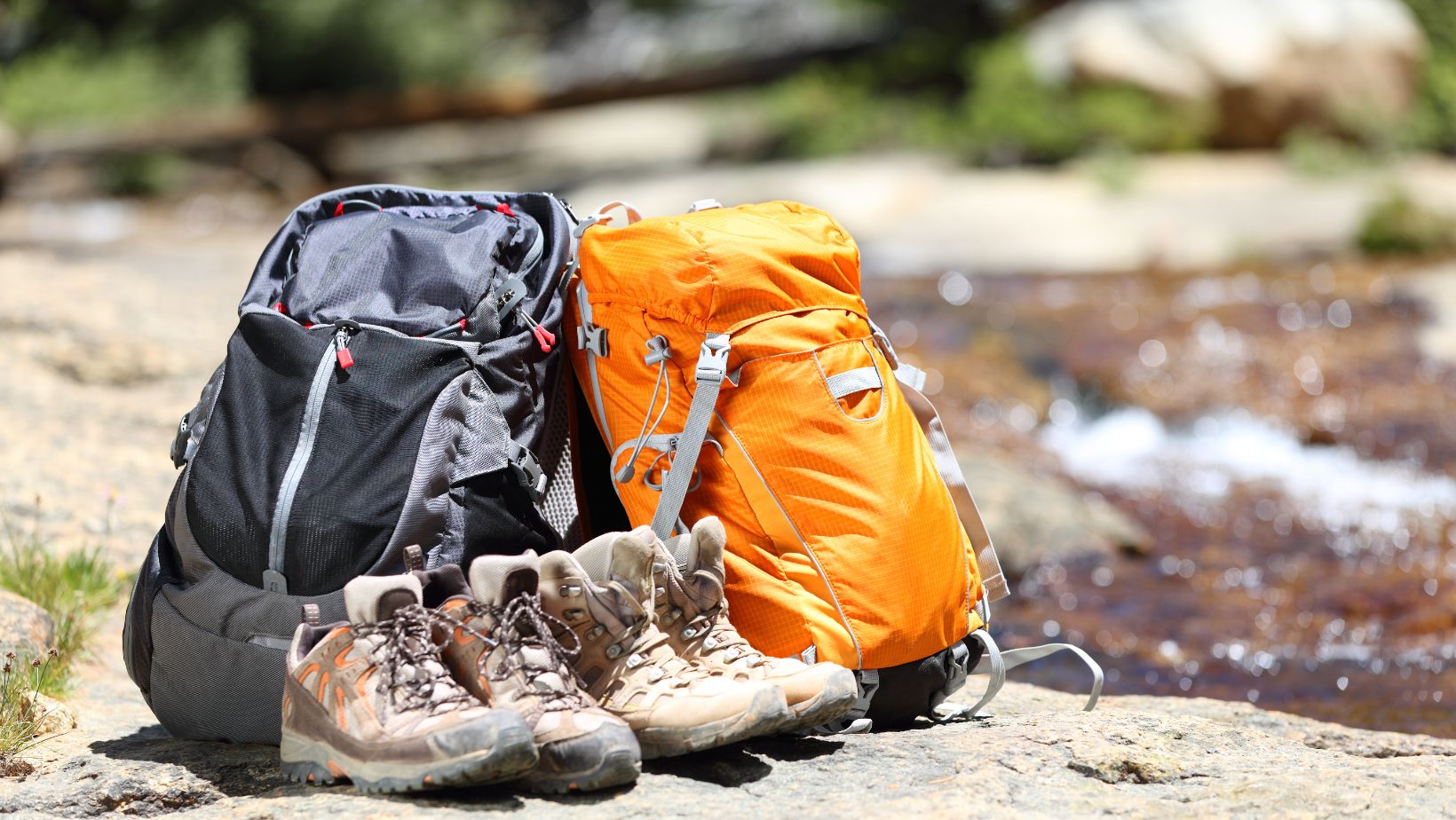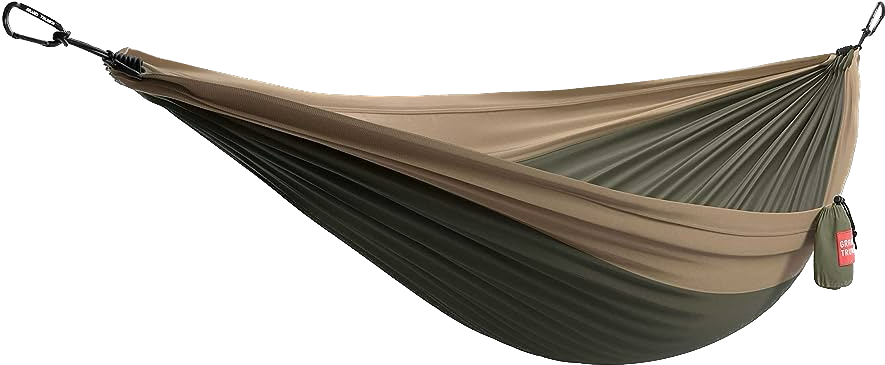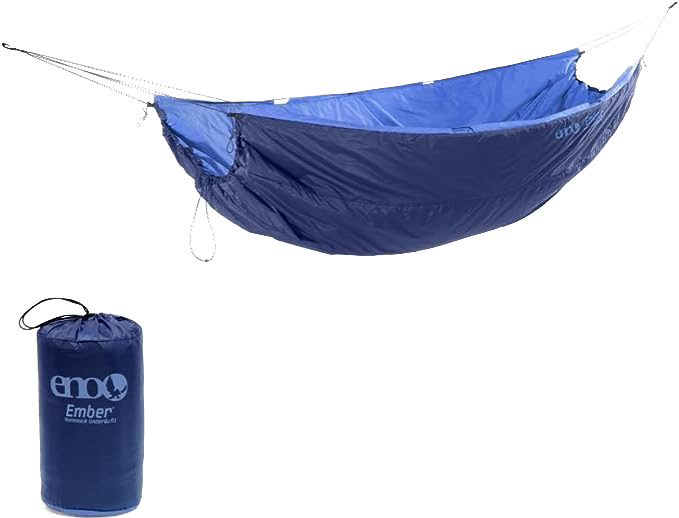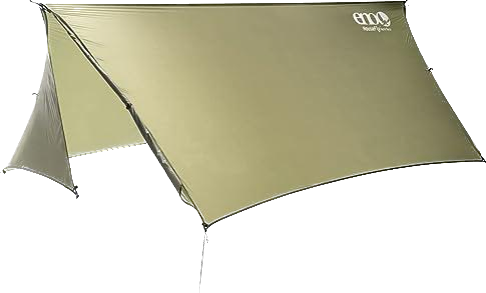When it comes to hammock camping, many backpackers and campers have experienced the challenge of finding a good place to safely store their gear. Unlike tents, there’s no natural storage built into a hammock. So if you’re planning a hammock camp trip soon follow these 6 helpful tips for storing hammock gear that will make sure everything goes smoothly during your outing.
Short Summary
- Hang your pack on hammock suspension, use a nearby tree, or invest in a gear sling to store it.
- Store hiking boots and shoes with ground pegs, hang them over the straps, or create stakes with sticks.
- Protect your gear from the elements by using a rain tarp or invest in waterproof bags/covers.
- Store food away from your sleeping area and take extra safety precautions when camping in bear country.
Storing Your Backpack While Hammock Camping

When planning a hammock camping trip, finding a safe and secure way of storing your backpack can be challenging. There are several options to pick from – some that work best in the mountains and others where you’re hammocking without trees. However, with each option comes its own advantages and drawbacks. We’ll discuss each one here in detail so you can pick what best suits your needs.
1. Hang Your Pack on Hammock Suspension
Using a suspension system to hang gear is one common way to keep your backpack off the ground and out of the rain for hammock campers. Typically this is done by suspending it on a separate rope, ridgeline, or tarp below or above your hammock (still under your rain fly).
Alternatively, some people opt for using carabiners to attach their gear directly to their hammocks. This option is great as you can have your gear close by and you can keep your backpack dry – provided that your hammock and hammock straps can handle the additional weight.
Here are some of the pros and cons of suspending your backpack and gear.
Pros:
- Easy access to grab items you need without leaving the hammock.
- Safe from curious wildlife like rodents, raccoons, or anything roaming the ground below.
- Free up space inside the hammock, allowing you to have more room to move around or have enough room for a sleeping pad/sleeping bag.
Cons:
- Hanging a heavy pack could damage the hammock or suspension system.
- In windy or stormy conditions, a suspended backpack might sway or get blown around, potentially causing issues.
- Additional setup and takedown
2. Utilize a Nearby Tree to Suspend Your Hammock Gear
One other option for storing a backpack is hanging it on a nearby tree. This is done in 1 of 2 ways.

The first method is to hang or attach the backpack directly to the trunk or branch of a tree. This is definitely the easiest and quickest option. However, your bag can be easily exposed to ants or any other critters climbing up and down the tree.

Method two is to suspend your gear from a branch using ropes. This option allows you to avoid the majority of critters you would encounter from option one. However, you will need to find a branch strong enough to support your pack. Just be aware of the strength of the branch you’re hanging your gear from. A good rule of thumb is to pick a tree branch that is at least 6 inches in diameter and within 4-6 feet away from the trunk. This should have enough strength to support your gear.
All in all, both options are great in that they keep items safe on higher grounds rather than having them laying around on dirt floors.
Pros:
- No additional setup or takedown.
- The backpack is suspended off the ground away from animals roaming around.
- Protection from rain and weather
Cons:
- The backpack or gear can easily be exposed to sap.
- Get out of your hammock to reach your pack – in most cases your gear will be a short distance away.
3. Setup a Gear Sling for your Pack
Using a gear sling is like hanging up your own mini hammock for your gear. It’s designed to safely store all of the equipment you need for your hammock camping such as backpacks, shoes, and any other items. This is probably my favorite option and is perfect for any backpacking trip. Many of slings are able to support up to +50lbs worth of weight – making them perfect for most backpacks and gear.
When setting one of these up, I recommend hanging them around 1-2 feet below your hammock. This will give your hammock space to sag once you get in, while also letting you still reach your gear without getting out of the hammock.
Pros:
- Easy access to gear as the sling will be right below you.
- Off the ground avoiding insects, snakes, and small animals.
Cons:
- Additional gear to pack and setup
- Still accessible by some larger animals such as foxes or raccoons.
4. Use a Ground Mat for Storing Your Shoes and Backpack
My recommended solution is to use a ground mat or small tarp that you place your shoes and backpack on. This method makes it easy to find your shoes and gear without getting out of your hammock. This becomes a priority when you need to use the restroom in the middle of the night and can’t find your shoes or flashlight. Not to mention, if it starts to rain or gets cold you can quickly pull out an overhead tarp or rain jacket without having to look for your pack.
Speaking of rain, you would think being on a ground mat would risk your gear getting soaked. However, there are a few steps you can take to mitigate the rain and keep your pack dry.
Firstly, adjust the position of your rain cover. Did you know that your hammock tarp can help direct the flow of water? Rather than creating an A-frame tent-style rain cover, adjust your tarp for one end to be slightly higher than the other. This will cause the rain to flow down the other side. Additionally, you can use a bathtub floor to protect your gear. Bathtub floors have walls along their sides and are meant to keep the water out. Just make sure not to set up on rocky ground but somewhere flat so it doesn’t get washed away.
Pros:
- Easy access to shoes. Able to get in and out easily and quickly
- Simple one-time setup and easy to use.
Cons:
- Full packs and shoes are exposed and could attract animals.
- Rain – when it rains water could be flowing and potentially run through your camp. You’ll need something to protect your gear and shoes.
Storing Boots and Other Gear While Hammock Camping

One of the most common questions I hear from hammock goers is, “Where do I put my hiking boots (shoes) when hammocking?”. It sounds so simple, but you would be surprised how often this comes up. So let’s dive in and start talking about 3 different options you could use to store your shoes while you’re hammocking.
5. Hang Boots Over Hammock Straps
When hammock camping, another way to keep your gear and boots off the ground is by hanging them over the hammock suspension. Tie everything together with a rope or cord then hang it on either straps or ridgelines so that there will be no danger of anything dropping during the night. Doing this lets you store items in an easily accessible location from inside your hammock.
Pros
- Keeps your shoes off the ground and away from any critters that would steal your shoe or seek shelter inside.
- Shoes are nearby the hammock and would easily be under a rainfly. Thus staying dry throughout the night. Just make sure to set a dripline if it begins to rain.
Cons
- Take time to untie and tie your shoelaces every time you want to get in or out of your hammock.
- Harder to find in the middle of the night when you’re needing to use the bathroom.
6. Create Stakes with Sticks
Using sticks can be a good option for you for storing your shoes while hammocking. The biggest reason to use this approach is it keeps the boots away from bugs and snakes from getting inside your boots. If you position the sticks below your hammock it also can protect them from rain.
To do this properly you’ll require two rods at least twelve inches in length which should be positioned into the soil on an angle so they stay sturdy. Then just hang up those shoes for a safe and secure night’s sleep!
Pros:
- Props the shoes off the ground (upside down). Making it hard for critters to get inside.
- Avoid the rain and don’t get wet. Can be positioned under the hammock as well as off the ground. The only concern is if the sticks get washed away by excessive rain and water flow.
Cons:
- The stability of the sticks could be an issue. Setup is required by finding the right sticks and digging into the ground. Thus the viability of this solution will depend on how deep you bury the stick and how sturdy the sticks you choose are.
- Risk of falling out and landing on spiky sticks. If you forget the sticks are there or do fall out of the hammock you could land on them.
Additional Hammock Camping Gear Storage Tips
Keeping Your Gear Dry During Hammock Camping

Keeping your pack and shoes dry is definitely an important part of storing your gear. Here are a few solutions that will help protect your gear from getting wet while out on a hammock camping excursion:
- Store your gear beneath your hammock and tarp – Use a bathtub floor with wall sidings if it rains
- Use a dry bag or stuff sack to store your pack and shoes
- Get a full-pack cover
- Hang your pack at the trunk of the tree
Use Ridgelines and Organizers
When hammock camping, it’s important to have a good system for storing gear. Along with the methods mentioned above, there are also solutions like using ridgelines and organizers as well as hooks, carabiners, or paracords.
Ridgelines make great storage spaces for items such as clothes and food. They can be hung from either trees or attached directly to your suspension system on the hammock itself. Organizers provide another way of stowing away equipment during your outdoor adventure – some come complete with straps that hook onto both ends of the hammock so you don’t even need extra accessories!
Hammock Camping in Bear Country

When hammock camping in bear country, you’ll want to take extra precautions for everyone’s safety. This includes properly storing gear as well as suspending food and other items that could attract bears at least 10 feet off the ground. Bear-resistant containers are ideal for this purpose, or you can hang them securely from trees using special straps.
Be sure to not have food near your sleeping area or any scented items like toothpaste lying around while out there. Always store everything scented or that could attract bears in safe containers when not being used!
Summary
Hammock camping offers a memorable and comfortable experience, but it is important to ensure that your gear remains dry and safe – especially when camping in bear country. Hang your backpack on the hammock suspension or utilize nearby trees with slings, hooks, carabiners, and paracord ridgelines. Any combination of these tactics will provide you with an effective method for keeping both yourself and your equipment protected while enjoying the beauty of nature from within a hammock.



 Hello there, we're Vira Outdoors!
Hello there, we're Vira Outdoors!

